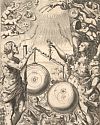
On 17 Apr 1598, Giovanni Riccioli was born, the Italian astronomer who was the first to observe a double star.
You can read more about Giovanni Riccioli’s contributions to Italian astronomy, including his book, Almagestum Novum (1651) in this article from The Penny Cyclopaedia of the Society for the Diffusion of Useful Knowledge (1841).
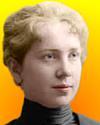
On 17 Apr 1933, Harriet Brooks died, the Canadian nuclear physicist who was probably the first to observe the recoil of the atomic nucleus as nuclear particles were emitted during radioactive decay. As one of the first researchers in the field of radioactivity, she was called by Ernest Rutherford the best woman scientist in the field next to Marie Curie. Today's book pick is: , by , who reveal how her success was hampered by the fact that she was a woman as she struggled to overcome conventions. Her premature death at age 56 was probably related to her work with radiation. This book is one that admirably fills the gap in describing the contribution of women to science.
It is available from Amazon, typically about (As of earlier time of writing - subject to change.)
 | I think it is a duty I owe to my profession and to my sex to show that a woman has a right to the practice of her profession and cannot be condemned to abandon it merely because she marries. I cannot conceive how women’s colleges, inviting and encouraging women to enter professions can be justly founded or maintained denying such a principle. (From a letter Brooks wrote to her dean, knowing that she would be told to resign if she married, she asked to keep her job. Nevertheless, she lost her teaching position at Barnard College in 1906. Dean Gill wrote that “The dignity of women’s place in the home demands that your marriage shall be a resignation.”) |
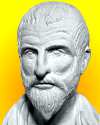 | This therefore is Mathematics: She reminds you of the invisible forms of the soul; She gives life to her own discoveries; She awakens the mind and purifies the intellect; She brings light to our intrinsic ideas; She abolishes oblivion and ignorance which are ours by birth... |
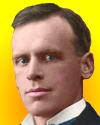 | In physiology, as in all other sciences, no discovery is useless, no curiosity misplaced or too ambitious, and we may be certain that every advance achieved in the quest of pure knowledge will sooner or later play its part in the service of man. |
| Before you look at today's web page, see if you can answer some of these questions about the events that happened on this day. Some of the names are very familiar. Others will likely stump you. Tickle your curiosity with these questions, then check your answers on today's web page. | |
| Births | |
 | Giovanni Riccioli, born 17 Apr 1598, was an Italian astronomer who in 1651, assigned the majority of the current names to features on the Moon. He named the more prominent features after famous astronomers, scientists and philosophers. What general name did he give to the large dark smooth areas of the Moon? |
 | Augustus love, born 17 Apr 1863, was a British geophysicist and mathematician who made a discovery that was subsequently named for him. Love proposed a method, based on his discovery, to measure the thickness of the Earth’s crust. What discovery is known by his name? |
| Deaths | |
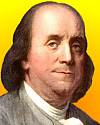 | An American printer and publisher (1706-1790) invented a type of stove, still being manufactured, to give more warmth than open fireplaces. The lightning rod and bifocal eyeglasses also were his ideas. What is the name of this scientist? |
| Events | |
 | On 17 Apr 1967, the spacecraft Surveyor 3 was successfully launched from Cape Kennedy, Florida. It was the second US spacecraft to make a soft landing on the moon, where it studied the lunar surface and sent more than 6300 pictures back to Earth. Further Surveyor space probes followed to validate soft-landing technology, determine the lunar surface conditions and return various other exploratory data, ahead of the Apollo landings. What was the final number in the Surveyor series of space probes? |
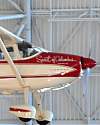 | On 17 Apr of a certain year, Jerrie Mock of Columbus, Ohio, became the first woman to complete a solo airplane flight around the world. She flew a single-engine Cessna Model 180 aircraft, on her 23,206-mile solo air voyage. The trip lasted 29½ days with 21 stopovers. In which decade was this woman’s transglobal flight made? |
Fast answers for the previous newsletter for April 16: Wilbur • carbon dioxide • Rosalind Franklin • by accident, through the skin, upon touching its container • pistols.
 If you enjoy this newsletter, the website, or wish to offer encouragement or ideas, please send feedback by using your mail reader Reply button.
If you enjoy this newsletter, the website, or wish to offer encouragement or ideas, please send feedback by using your mail reader Reply button. Your click on a Facebook, StumbleUpon, or other social button on the site webpages is also a welcome sign of appreciation. Thank you for using them.
© This newsletter is copyright 2020 by todayinsci.com. Please respect the Webmaster's wishes and do not put copies online of the Newsletter — or any Today in Science History webpage. (If you already have done so, please remove them. Thank you.) Offline use in education is encouraged such as a printout on a bulletin board, or projected for classroom viewing. Online, descriptive links to our pages are welcomed, as these will provide a reader with the most recent revisions, additions and/or corrections of a webpage. For any other copyright questions, please contact the Webmaster by using your mail reader Reply button.
--
If you do not want to receive any more newsletters, Unsubscribe
To update your preferences and to unsubscribe visit this link
Executive Real Estate Business Class
-
"It was like a man with wings. It wasn't like anything you'd see on TV or in a monster movie." ...
About the publisher
Search This Blog
Blog Archive
-
▼
2021
(585)
-
▼
April
(57)
- On This Day for April 30 - George Washington inaug...
- Newsletter for Friday 30 April.
- On This Day for April 29 - British royal wedding, ...
- Newsletter for Thursday 29 April.
- On This Day for April 28 - Benito Mussolini execut...
- Newsletter for Wednesday 28 April.
- On This Day for April 27 - Independence for Sierra...
- Newsletter for Tuesday 27 April.
- On This Day for April 26 - Chernobyl nuclear accid...
- Newsletter for Monday 26 April.
- On This Day for April 25 - Hubble Space Telescope ...
- See How They Tracked Down Bin Laden
- Newsletter for Sunday 25 April.
- On This Day for April 24 - Installation of Pope Be...
- Newsletter for Saturday 24 April.
- On This Day for April 23 - Voting for Eritrea's in...
- Earth Day Bonus: Become a Climate Action Expert
- On This Day for April 22 - First Earth Day, Miguel...
- On This Day for April 21 - French elections held, ...
- Newsletter for Wednesday 21 April.
- On This Day for April 20 - Explosion on the Deepwa...
- Newsletter for Tuesday 20 April.
- On This Day for April 19 - American Revolution beg...
- Newsletter for Monday 19 April.
- On This Day for April 18 - The midnight ride of Pa...
- Newsletter for Sunday 18 April.
- On This Day for April 17 - Canada Act proclaimed, ...
- Newsletter for Saturday 17 April.
- On This Day for April 16 - Harriet Quimby's flight...
- Newsletter for Friday 16 April.
- On This Day for April 15 - Sinking of the Titanic,...
- Newsletter for Thursday 15 April.
- On This Day for April 14 - Abraham Lincoln shot, J...
- On This Day for April 13 - Alfred Dreyfus imprison...
- Newsletter for Tuesday 13 April.
- On This Day for April 12 - Launch of first space s...
- Newsletter for Monday 12 April.
- John of Gaunt: father of England’s medieval monarchy
- On This Day for April 11 - Napoleon's abdication a...
- Newsletter for Sunday 11 April.
- On This Day for April 10 - Anschluss approved in A...
- On This Day for April 9 - Fall of Baghdad, Jørn Ut...
- Newsletter for Friday 9 April.
- On This Day for April 8 - Celebration of the Buddh...
- On This Day for April 7 - Jack Nicklaus's first Ma...
- Newsletter for Wednesday 7 April.
- On This Day for April 6 - Olympics revived, Raphae...
- On This Day for April 5 - Battle of Maipú, Colin P...
- The history and origins of Easter
- On This Day for April 4 - Martin Luther King, Jr.,...
- Newsletter for Sunday 4 April.
- On This Day for April 3 - Implementation of the Ma...
- Newsletter for Saturday 3 April.
- On This Day for April 2 - Death of Pope John Paul ...
- Newsletter for Friday 2 April.
- On This Day for April 1 - Creation of Nunavut, Ser...
- Newsletter for Thursday 1 April.
-
▼
April
(57)
-
Blogroll
-
About
HistoryFact










0 comments:
Post a Comment